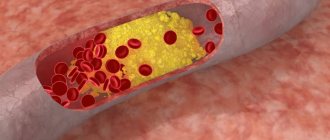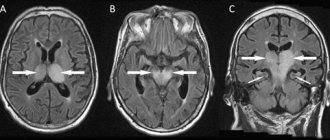Without this group of biologically active substances (including cholecalciferol and ergocalciferol), the functioning of many organs is impossible. With a vitamin deficiency, bones become brittle and brittle - this is the first sign of vitamin deficiency.
Residents of countries where there is a lot of sunshine are practically not threatened by shortages. Their body synthesizes the vitamin thanks to the rays of the sun. In countries where there is little sun, vitamin D deficiency is often diagnosed.
What causes vitamin D deficiency?
Vitamin D deficiency in many Russian residents is due to:
- location in the northern temperate zone (above 42 degrees north latitude)
- limited exposure to the sun (office work, driving cars)
- eating meat from animals that have not been exposed to the sun (farm)
- use of sunscreens
- chronic diseases (obesity, intestinal pathology, taking a large number of medications)
You can determine the level of vitamin D in your body by taking the following test:
25-OH vitamin D (25-hydroxycalciferol) (amount)
Admission rules
You should take the pharmacy vitamin strictly following the instructions, namely:
- The drug is taken in the morning or at lunch (first half of the day), since it can actively affect the nervous system and cause overexcitation and insomnia. This point especially applies to children.
- Since vitamin D is classified as a fat-soluble vitamin, you need to eat something fatty along with the pill. So he will assimilate well.
- Separate intake of vitamins D and E is indicated, since their combined use reduces the absorption of both.
- Calcium and another vitamin K are well absorbed along with vitamin D. It is not at all necessary that the intake take place at the same time, the body simply must receive a daily dose of all of the listed substances.
For the curious
Vitamin D
combines a group of vitamins (D1, D2, D3, D4, D5), of which only two forms (D2 and D3) have important biological significance.
| 1. | 7DHC (cholesterol) | A precursor to vitamin D, it forms its reserve in the skin. |
| 2. | D3 (cholecalciferol) | In the skin 80% of vitamin D3 is formed from cholesterol under the influence of beta-UV rays. Its 20% enters the body with food of animal origin (fish oil, liver, egg yolk). |
| 3. | D2 (ergocalciferol) | Enters the body only with plant products (bread, etc.) |
| 4. | 25(OH)D3 (calcidol) | Then in the liver from both forms, as a result of hydroxylation (addition of an OH group), 25-OH-hydroxy-cholecalciferol (calcidol). This form is depot and transport; it is this form that is determined in the blood to determine the level of vitamin D. |
| 5. | 1.25(OH)D3 (calcitriol) | Next in the kidneys with the participation of parathyroid hormone (parathyroid hormone), the second hydroxylation occurs and the formation of the active form - 1,25-OH-dihydroxy-CHOLECALCIFEROL (calcitriol). It is calcitriol that provides the main biological effects of vitamin D in the body. |
The main biological role of calcitriol
(1,25-OH-vitamin D) is to maintain a constant level of calcium in the blood (vitamin D enhances the absorption of calcium in the intestines and, if there is not enough calcium in the blood, ensures the flow of calcium from the bones into the blood).
Over time, receptors for calcitriol, in addition to the intestines and bones, were found in the kidneys, genitals, pancreas, muscles, cells of the immune and nervous systems. Thus, it became clear that vitamin D performs a large number of different functions in the human body:
- regulates the expression of 3% of the human genome (several thousand genes)
- increases the sensitivity of the insulin receptor (prevention of insulin resistance, obesity, diabetes)
- strengthens the skeletal system
- reduces the level of parathyroid hormone in the blood
- promotes the synthesis of sex hormones (testosterone, estrogens, progesterone)
- improves reproductive function
- affects innate and acquired immunity
- prevents the development of tumors, depression, Parkinson's disease
Page 14 of 15
EMBRY DIET. Recommendations and menus for multiple sclerosis
These recommendations for dietary changes were developed based on diverse and reliable scientific evidence that shows the relationship of various dietary factors to the manifestation and progression of multiple sclerosis
What you need to know before starting the Embry Diet
The goal of this diet is to stop the consumption of foods whose molecular structure is so similar to the human body's myelin that it can trigger autoimmune processes. These include dairy products, gluten and legumes. Eggs and yeast are allowed in limited quantities unless a person is allergic to them. At first, this diet may seem quite restrictive compared to regular eating, but fortunately, these tips will help make the transition to new eating habits easy.
Exclude:
- Products containing proteins that can cause autoimmune reactions. These include: all dairy products (milk, butter, cheese, yogurt, etc.);
- cereals containing gluten (wheat, rye, barley, etc.);
- legumes (beans, soybeans, peanuts, peas);
Limit:
- Foods containing saturated fats. Include red meat (lean meat) in your diet once a week.
- Intake 6-omega unsaturated fats, which are found in margarine, salad oil and baked goods. For fats, use olive oil (monounsaturated fat).
- Gluten-free grains such as corn and oats. Use mostly rice, but it should be consumed in moderation.
- Alcohol consumption. Best of all, wine in moderation, and the complete exclusion of beer.
Increase:
- Eating chicken (breast, without skin), other poultry and fish to replenish protein. Salmon and mackerel are good for omega 3 fatty acids.
- Content in the diet of vegetables and fruits containing carbohydrates and fiber.
- Taking various supplements to support immune system autoregulation, increase antioxidant activity, and avoid deficiencies.
Additional Nutritional Factors
An important part of the nutritional strategy for Multiple Sclerosis is a system of supplements in the daily diet. The basic supplement recommendations presented below are completely safe and can have significant benefits.
Necessary (hereinafter dosage per day):
- Vitamin D3 - 4000 IU; best taken separately from vitamin A;
- 3-omega unsaturated fatty acids - 3 grams EPA + DHA. The best option is fish oil, such as salmon. It is also possible to consume a teaspoon of cod liver, but it is not known whether it contains more than 5000 IU of vitamin A. Taking an additional 1 teaspoon of flaxseed oil may also be helpful. Flaxseed oil contains linoleic acid, which is a precursor to EPA and DHA;
- Calcium - 1000 t - 1200 mg;
- Magnesium - 500 - 600 mg.
Vitamins:
- Vitamin A – 5000 IU;
- Vitamin B complex – 50 mg;
- Folic acid – 1 mg;
- Vitamin B12 – 100 mcg;
- Vitamin C – 1 g;
- Vitamin E – 400 IU.
Minerals:
- Zinc – 25 – 50 mg;
- Copper – 1-2 mg;
- Selenium – 200 mcg;
- Manganese – 20 mg
Antioxidants:
- Ginko Biloba - 120 mg;
- Grape seed extract - 2-4 capsules;
- Coenzyme Q10 - 60-90 mg.
Probiotics:
- Acidophylline – 6-9 capsules (2-3 with each meal)
Optional Additives
Some specific supplements may have potential value. They can be quite expensive and are therefore included in a separate list.
- R+ alpha lipoic acid – 500 mg. Powerful antioxidant. There are varying opinions regarding its use, but no side effects have been reported.
- N-acetylcysteine – 500 mg. May cause glutathione levels to rise, resulting in increased antioxidant activity.
- EGCG Max (epigallocatechin-3-gallate) – 2 – 3 capsules (700 mg each). Strong antioxidant. Contained in green tea.
- Inosine – 2g. This supplement increases uric acid levels, which neutralize perioxynitrite. Note: Gout may occur if uric acid levels are too high. It is necessary to raise uric acid levels as high as possible without triggering gout.
- << Back
- Forward >>
Vitamin D deficiency
A lack of vitamin D in the body can lead to the development of:
- diseases of the cardiovascular system
- immunodeficiency, allergies, psoriasis, bronchial asthma, rheumatoid arthritis
- periodontal disease
- tumors of the large intestine, mammary glands, ovaries, prostate
- chronic fatigue, depression, insomnia
- decreased muscle strength leading to a risk of falls
- decreased motility and number of morphologically normal sperm (male factor infertility)
- risk factor for premature birth, fetopathies (less than 20 ng/ml)
Achieving a vitamin D level of 50 ng/ml (125 nmol/l) reduces the risk of developing:
| % | |
| Rakhita | 100 |
| Ostemalacia (softening of bone tissue) | 100 |
| Cancer in general | 75 |
| Breast cancer | 50 |
| Ovarian cancer | 25 |
| Colon cancer | 65 |
| Kidney cancer | 65 |
| Uterine cancer | 35 |
| Diabetes mellitus type 2 | 50 |
| Perelomov | 50 |
| Falls in women | 70 |
| Multiple sclerosis | 50 |
| Myocardial infarction | 50 |
| Vascular diseases | 80 |
| Preeclampsia | 50 |
| Caesarean section | 75 |
| Infertility | 70 |
Vitamin D is important during pregnancy.
Its deficiency is associated with the risk of developing gestational diabetes mellitus, premature birth, preeclampsia, and various intrauterine developmental defects.
There is not a single case of teratogenic (leading to the development of tumors) effect of vitamin D in the world.
Multiple sclerosis: symptoms and course of the disease
Multiple sclerosis (MS) is a terrible disease. Until now, hopes for a real cure are very low. In Germany, multiple sclerosis affects 150 people out of 100,000. It mainly affects young people in their prime - between 20 and 40 years of age. Those affected are unable to care for themselves, and some end up in a wheelchair.
Multiple sclerosis is a chronic inflammatory autoimmune disease affecting the central nervous system (brain and spinal cord, sometimes also optic nerves). As the disease progresses, the outer layer of the spinal cord slowly hardens. Because of this, the conduction of electrical impulses from nerve cells is disrupted (these impulses are sent from the brain to other organs and back).
Various symptoms appear, such as sensory disturbances, numbness of organs, pain, problems with swallowing, blurred vision (blurred vision, double vision, etc.). Over time, the patient becomes noticeably weaker, begins to move more slowly, and eventually stops moving altogether. However, MS does not always lead to a wheelchair. Most people with this disease can walk independently even years after the onset of the disease.
In addition, in most cases, the course of MS is a chain of exacerbations. This means that after the next exacerbation, the symptoms may completely disappear (until the next exacerbation). However, neurological disorders of a permanent nature may also develop, increasing with each exacerbation.
Vitamin D standards
Considering the different units of measurement, the recommended level is:
60 - 100 ng/ml
150 – 250 nmol/l
To convert from ng/ml to nmol/l you need ng/ml * 2.5 = nmol/l
Example: 30 ng/ml * 2.5 = 75 nmol/l
Russian Association of Endocrinologists
considers
the optimal concentration
of vitamin D in the blood of an adult to be 30-100 ng/ml,
deficiency is
20-30 ng/ml,
deficiency
is less than 20 ng/ml.
According to data presented at the 10th European Congress on Menopause and Andropause (Madrid, 2015), vitamin D levels in obese patients in Russia:
less than 20 ng/ml - 35%
20-30 ng/ml - 30%
more than 30 ng/ml - 35%
Daily Values for Vitamin D
according to the recommendation of the American Society of Endocrinology (2011).
| Age group | Recommended daily dose, IU | Maximum permissible level of consumption, IU |
| Infant, 0 - 6 months | 400 | 1000 |
| Infant, 7 - 12 months | 400 | 1500 |
| Children 1 - 3 years old | 600 | 2500 |
| Children 4 - 8 years old | 600 | 3000 |
| Children 9 - 17 years old | 600 | 4000 |
| Adults 18 – 70 years old | 600 | 4000 |
| Adults over 70 years old | 800 | 4000 |
| Pregnancy and lactation | 800 | 4000 |
Prophylactic dose
vitamin D (when you can not detect it in the blood and take it calmly) is considered to be 4,000 IU per day.
Without medical supervision, it is not recommended to take vitamin D at a dose of 10,000 IU for more than 6 months. (Russian Association of Endocrinologists)
It is almost impossible to overdose on vitamin D. For example, in Holland, an elderly couple (90 and 95 years old) accidentally took a single dose of cholecalciferol 2,000,000 IU each.
Doctors monitored them for 2 months and did not identify any symptoms of overdose or toxicity. The maximum blood concentration of its form of 25-OH-vitamin D on day 8 was 210 and 170 ng/ml, respectively, which is slightly higher than its target values.
In tablets or oil solution?
As a supplement, vitamin D is available in drops, capsules, tablets, and even as a sublingual spray. They are absorbed approximately equally, the oil form is a little better. But there are several subtleties.
On the one hand, bioavailability studies on animals showed that capsules and oil solution are absorbed twice as efficiently as the aqueous form. On the other hand, any vitamins in oil form are poorly absorbed if the absorption function of the intestine is impaired. For example, in premature babies, not enough bile enters the intestines, which is why oil solutions work less well.
Sunlight instead of pills
Nevertheless, warnings of this kind, of course, cause skepticism. But vitamin D does not have to be taken in tablets. Since the human body can independently produce this vitamin when exposed to sunlight, it is enough to expose your skin to the sun every day. This way you can get enough vitamin D completely free of charge without any risk of overdose.









